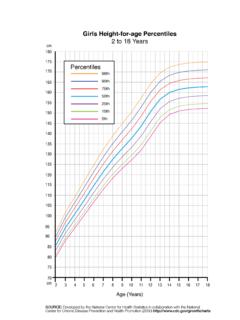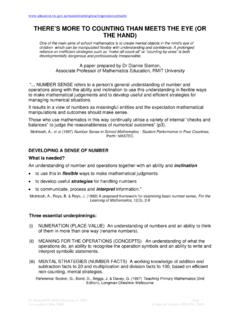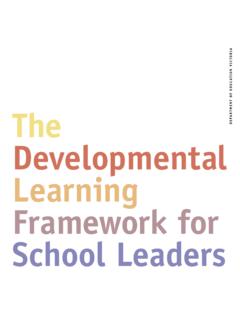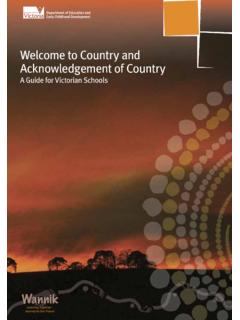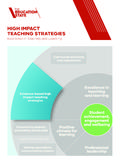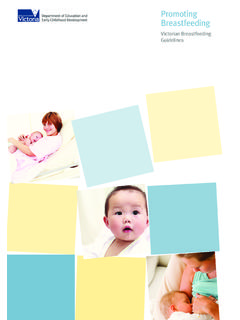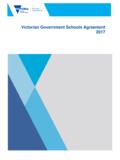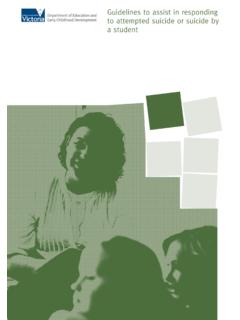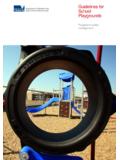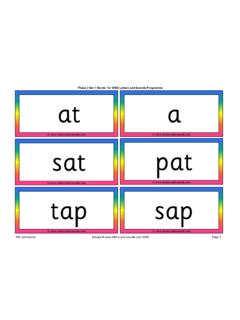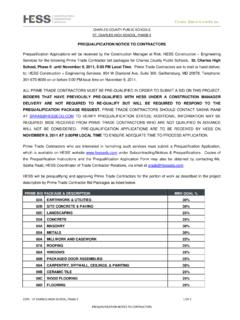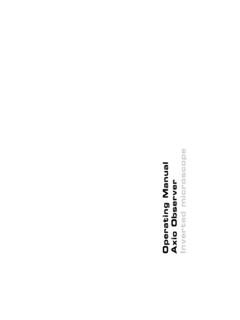Transcription of Every Toddler Talking Phase 1 Final Report
1 Every Toddler Talking ( Phase One): Final Report Prepared by: Murdoch Childrens Research Institute Prepared for: Department of Education and Training July 2015 Acknowledgements We would like to thank everyone who generously provided input and advice through the project s online survey, interviews and workshop. Your feedback and support was valuable in shaping the design of the Every Toddler Talking initiative. Contents 5 Executive Summary .. 7 Background .. 7 Methodology .. 8 Rapid review findings .. 9 Practice review findings .. 10 Advice from the field and experts .. 12 Every Toddler Talking options.
2 12 Recommended model .. 13 Evaluation of the model .. 14 Other Phase Two recommendations .. 15 Introduction .. 17 Overview of Every Toddler Talking .. 17 Phase One .. 17 Report structure .. 17 Background .. 18 Promoting child language and communication in the early years .. 18 Methodology .. 20 Project objectives and key questions .. 20 Approach .. 21 What works for promoting babies and toddlers language and communication? .. 24 Findings from the rapid review .. 24 What approaches are currently being used in Victoria to promote babies and toddlers language and communication and where? .. 34 Findings from the practice review .. 34 What needs to be considered in the design and implementation of Every Toddler Talking ?
3 44 Advice from the field and experts .. 44 Every Toddler Talking options and recommendations .. 46 Key findings .. 46 What are the options for Every Toddler Talking ? .. 47 Which is the most viable option for Every Toddler Talking ? .. 48 Learning Language and Loving It: Detailed analysis .. 63 Enhancements to the model .. 75 78 Conclusions .. 85 Recommended model .. 85 Evaluation recommendations .. 86 Other Phase Two recommendations .. 87 References .. 89 Appendix 1 .. 93 Appendix 2 .. 99 Appendix 3 .. 102 Appendix 4 .. 103 Appendix 5 .. 104 Appendix 6 .. 107 Appendix 7 .. 109 Appendix 8 .. 111 Appendix 9 .. 135 Appendix 10 .. 153 Appendix 11.
4 155 Appendix 12 .. 158 Appendix 13 .. 215 Every Toddler Talking Final Report 5 Glossary AH professional: Allied health professional. AIFS: Australian Institute of Family Studies. Allied health professional: A sub-set of Australian health professions that exclude medical, nursing or dental professionals and, in the context of this project, work with children and their families to improve children s learning and development. Includes speech pathologists and occupational therapists. Approach: Any strategy that does not fit the definition of a program (see below). ATSI: Aboriginal and Torres Strait Islander. Babies and toddlers: Young children from birth to three years of age.
5 CCCH: Centre for Community Child Health at Murdoch Childrens Research Institute. CRE-CL: Centre of Research Excellence in Child Language at Murdoch Childrens Research Institute. Department: Victorian Government Department of Education and Training. DHHS: Victorian Government Department of Health and Human Services. EC: Early childhood. ECEC: Early childhood education and care. EYLF: Early Years Learning Framework. Language: The ability to understand and use spoken language. For example, the ability to put words together to form phrases and sentences. Language and communication: Refers to the language and communication of young children (birth to three) unless explicitly expressed otherwise.
6 LGA: Local government area. LLLI: Learning Language and Loving It, the Hanen program for early childhood educators. Low language: A child is acquiring language at a slower rate when compared to typically developing peers. Some children with low language in the early years (birth to three) will go on to have language impairment. A persistent language impairment can have lasting adverse effects on one s ability to function effectively in social, employment and educational domains. MCH: Maternal and child health. MCRI: Murdoch Childrens Research Institute. NQS: National Quality Standard. Practice: Qualities of interaction, language, learning activities and learning environments, which promote language development.
7 Primary prevention: Activities with a universal focus which aim to promote language and prevent persistent low language. Programs: A replicable model for promoting children s language development that typically requires some form of training and/or manual and includes core components that remain unchanged regardless of where it is delivered. Every Toddler Talking Final Report 6 RCT: Randomised control trial. Secondary prevention: Activities with populations identified as being at risk of poor language development with the objective of minimising the effect of those risks. SEIFA: Socio-economic indexes for areas. SLT: Speech-language therapist (British speech pathologist).
8 SP: Speech pathologist. VEYLDF: Victorian Early Years Learning and Development Framework. Every Toddler Talking Final Report 7 Executive Summary Every Toddler Talking is an initiative of the Department of Education and Training (the Department) to improve language and communication outcomes for babies and toddlers. The initiative seeks to strengthen early childhood (EC) educators ability to promote children s language and communication development (birth to three) and improve collaboration between EC educators, allied health (AH) and other EC professionals. Every Toddler Talking comprises two phases . For Phase One, the Department partnered with the Centre for Community Child Health (CCCH) and the Centre of Research Excellence in Child Language (CRE-CL) at Murdoch Childrens Research Institute to undertake a project involving: 1.
9 A rapid review of evidence-based programs and practices that have been shown to promote children s language and communication (the rapid review ); 2. A review of current practices used in Victoria to promote children s language and communication (the practice review ); and 3. Engagement of experts and professionals from relevant sectors in the design of a feasible and suitable evidence-informed model ( advice from the field and experts ) and recommendations for evaluation. This is the Phase One Report and provides options and recommendations for the Every Toddler Talking model and evaluation based upon the findings of these three activities.
10 Phase Two will involve trialling and evaluating the selected model to improve language and communication outcomes for babies and toddlers in Victoria. Background Language development is a cornerstone of child development, underpinning the development of academic, social and emotional outcomes. A child s language development pathway is determined by multiple factors. Social and environmental factors are as important as genetic and biological factors. During the first five years of life, children s language and communication skills develop rapidly. However, during this period language does not develop in a predictable or consistent way; language can accelerate, plateau or even go backwards within the space of a year.
